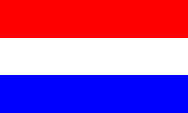
The actors

 |
The actors |  |
The SunHaving a diameter of 1392 000 km, or being 109 times the Earth, the Sun is the star situated the closest to us. The Earth turns around this star with a rhythm of one revolution per year. Composed of 98% of hydrogen and helium, The Sun's central temperature is more than 15 million degrees in Celsius. That temperature together with the enormous pressure that exists in its center, maintains the thermonuclear fusion which is at the origin of the light and the heat that reaches us. Which seem to be at the basis of life and are essential for its continuation.
The Moon
This natural satellite is 4 times smaller than our planet. Earth carries out a 27 day 7 hour and 43 minute revolution around this satellite. A interesting coincidence shows that the Moon, being 400 times smaller then the Sun is also 400 times nearer to us then the Sun, which then gives the Sun and the Moon the same apparent dimensions. The distance separating the Moon from our planet varies from 356 375km to 406720 km, which gives as result a Moon that sometimes seems larger or smaller then the Sun. In the first case, we are attending a "total" eclipse, in the second case, we call it a an "annular" eclipse, thus because a ring of Sun is visible during the eclipse. The Moon's rotating period is strictly the same as it's revolution period around Earth. So the Moon always shows us the same side. The plane of the lunar orbit has about a 5 degree inclination compared to the ecliptic plane.
The Earth
Our planet, a 12700km diameter and 40000km circumference sphere, is the third planet from the Sun after Mercury and Venus and before Mars. Its revolution period around the Sun is of 365,256 days and is called a sidereal year. Its rotation period around the poles axes is 23 hours 56 minutes and 4 seconds/ This axis forms a 23 degree 27' angle compared to the perpendicular of the ecliptic plane. As a top, Earth slightly flat at its poles, describes a precession movement. This movement is the one of the axis of rotation of the Earth in relation to the perpendicular to the ecliptic plane. This axis forms a 23degree27' cone. This cycle is called the precession period of the equinox because the spring equinox arrives every year, 20 minutes later than the sidereal year. The scholar year, which is the period between two spring equinox, is shorter and is about 365.2422 days long.
  Previous page Previous page |
Next page   |
| Webmaster: Antoine van Ruymbeke | Last modifications: 3 July'99 |